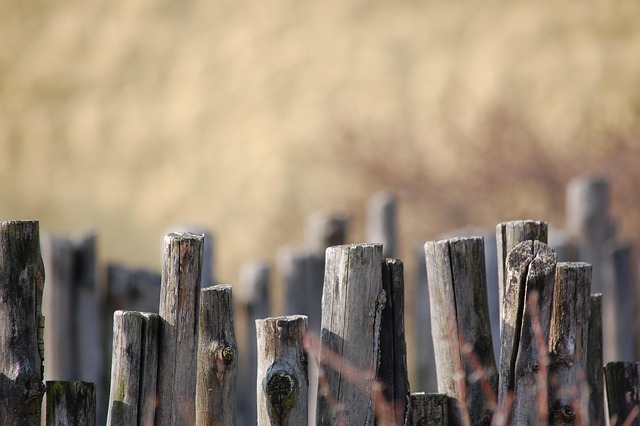In New Bedford, a well-maintained fence is not just an exterior accessory but a crucial component of property value and security. However, these structures often face the brunt of weather changes, pets, and accidental damage. Understanding common fence damage and knowing when to seek professional installation or repair can extend their lifespan significantly. This article explores practical tips on identifying and addressing fence issues, from recognizing typical damages in New Bedford’s unique conditions to providing a step-by-step guide for effective repairs and essential maintenance advice for your new or repaired fence.
- Understanding Common Fence Damage in New Bedford
- The Benefits of Professional Fence Installation
- Choosing the Right Materials for Durability
- Step-by-Step Guide to Fence Repair
- Maintaining Your New Fence: Tips and Tricks
Understanding Common Fence Damage in New Bedford
Fences in New Bedford, like anywhere, are exposed to various elements and potential hazards, leading to common forms of damage over time. One of the most frequent issues is rot, particularly in areas with high moisture levels or poor drainage. Wood fences can also suffer from insect infestations, which weaken the structure and compromise its integrity. Weather-related damage is another significant concern; strong winds, storms, and heavy snowfall can bend, break, or uproot fences. Moreover, fence posts may settle unevenly due to shifting soil conditions, causing warping or gaps in the fence line. Additionally, vehicles hitting fences, accidental damage from lawn equipment, and vandalism are other factors that contribute to fence deterioration. Identifying these common issues is essential for homeowners and property managers as it enables them to address problems promptly, ensuring the longevity of their fences.
The Benefits of Professional Fence Installation
Hiring professionals for fence installation brings numerous advantages to homeowners. One of the primary benefits is expertise and experience. Experts in this field have the knowledge and skills to handle various fence types, styles, and materials, ensuring a perfect fit for your property. They can offer tailored solutions, considering factors like local regulations, terrain, and unique design preferences.
Professional installers also guarantee quality and durability. They use high-quality materials and employ best practices during installation, ensuring the fence is secure and long-lasting. This reduces the risk of structural issues or premature replacement, saving you time and money in the long run.
Choosing the Right Materials for Durability
When it comes to fence repair and installation, selecting the right materials is paramount for ensuring longevity and durability. Steel and aluminum are popular choices due to their resistance to rust and corrosion, making them ideal for withstanding harsh weather conditions. However, wood remains a favorite among many homeowners for its classic aesthetic appeal and ability to create a warm atmosphere. When new Bedford fence repair or installation services are needed, consider the local climate and environmental factors that could impact material selection. For instance, in areas prone to heavy rainfall or high humidity, water-resistant treatments and coatings should be applied to wooden fences to prevent rot and decay.
The quality of materials is equally important as the type chosen. Opting for premium-grade products from reputable suppliers ensures better performance and longer lifespan. Look for materials that come with warranties, guaranteeing their durability and offering peace of mind. Additionally, consider the maintenance requirements associated with each material. While some may require minimal upkeep, others might necessitate regular cleaning, painting, or sealing to maintain their structural integrity and visual appeal over time.
Step-by-Step Guide to Fence Repair
Repairing a fence can seem daunting, but with the right approach, it’s a manageable task. Here’s a straightforward guide to help you tackle common fence repairs:
1. Assess the Damage: Start by inspecting your fence thoroughly. Identify broken or missing pickets, rotten posts, loose panels, or any other damage. Take note of the extent of the problem and gather the necessary tools and materials for repair.
2. Replace Damaged Components: If pickets or panels are missing or damaged beyond repair, replace them with new ones that match your fence’s style and material. Ensure proper measurements before purchasing replacements. For rotten posts, consider using pressure-treated wood to prevent further deterioration. Replace the post if it’s beyond salvage.
3. Tighten Loose Panels: Use a ladder to access the top rails and check for any loose or detached panels. Reattach them securely with screws or nails, ensuring they’re level. Reinforce the fence line if needed by adding bracing materials between posts.
4. Stabilize and Reinforce: For posts that show signs of rot or movement, drive new metal stakes into the ground at strategic points along the post’s base to stabilize it. Apply a water-repellent sealer to protect against moisture damage and further decay.
5. Check and Tighten Hardware: Inspect all fence hardware, such as brackets, hinges, and latches. Lubricate moving parts and replace any worn-out components. Ensure gates open and close smoothly, and adjust hinges for proper alignment if needed.
Maintaining Your New Fence: Tips and Tricks
A new fence is an investment, so it’s important to maintain it to extend its lifespan and preserve its aesthetic appeal. Regular cleaning is a good place to start. Use a soft-bristled brush or sponge to gently clean your fence with mild soap and water, removing any dirt, debris, or mildew buildup. Avoid using harsh chemicals that could damage the finish.
Inspecting your fence regularly for any signs of damage is also crucial. Keep an eye out for loose boards, broken posts, or peeling paint. Promptly repairing even small issues can prevent further damage and costly replacements down the line. Consider treating your fence with a high-quality sealant every few years to protect it from the elements, prolonging its life, and keeping it looking its best.
